In Japan, it is common to sit upright on the floor in lots of situations – including whilst eating.
Traditionally, Japanese meals are served on low tables on top of a tatami floor.
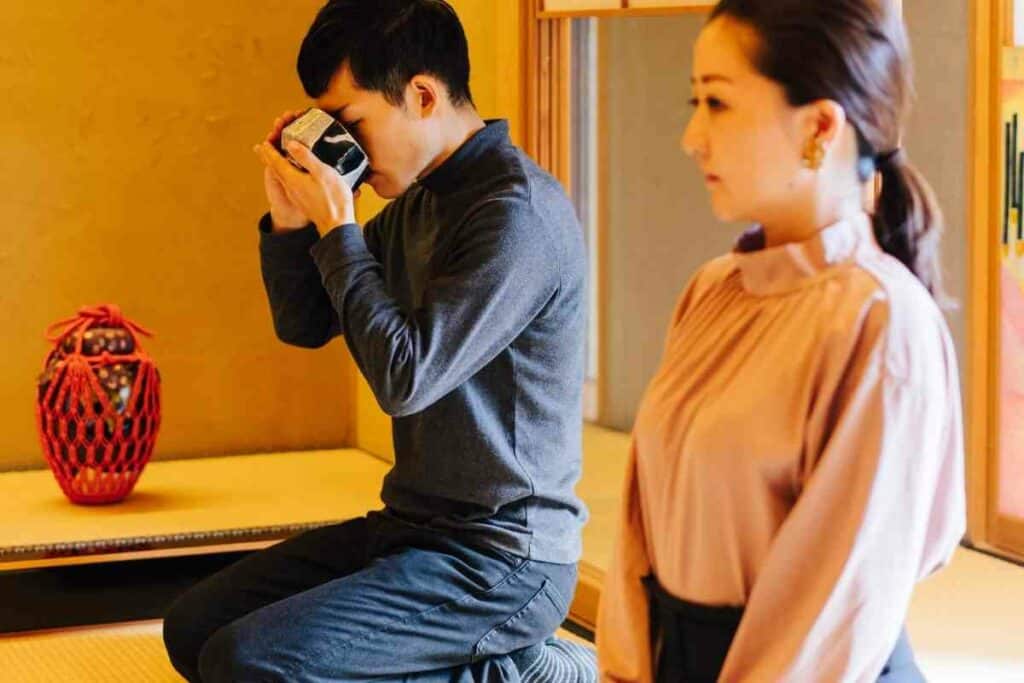
It is customary to kneel whilst eating and during other traditional events like tea ceremonies.
Table of Contents
The different ways of sitting or kneeling whilst eating
There isn’t just one way to kneel whilst eating.
In a casual situation, a man will sit with his legs crossed while a woman will sit with both of her legs going to one side.
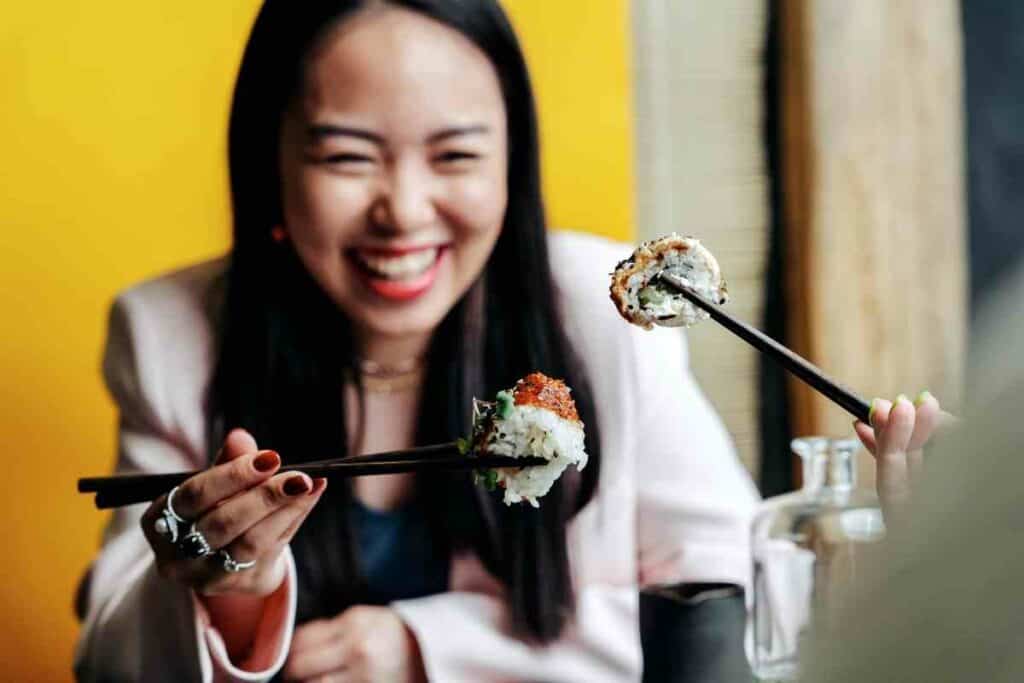
It’s rare to see women sitting with their legs crossed and it’s also rare to see men with their legs to the side too.
In formal Situations – You will see both genders kneel whilst eating. This is called seiza. For those who aren’t used to sitting like this, it can be a little uncomfortable, to begin with.
Foreign visitors aren’t usually expected to sit in this style for a lengthy meal – and lots of Japanese people aren’t either.
Many Japanese people prefer to kneel whilst eating because it helps you to sit taller.
Whilst kneeling, you can’t slouch so your shoulders and back are stronger, and your spine stays straight.
What’s More – Your hips and knees are stretched, which keeps them supple.
Where did the tradition to kneel whilst eating come from?
In Ancient Japan, and even in the present, there wasn’t a lot of furniture in Japanese homes.
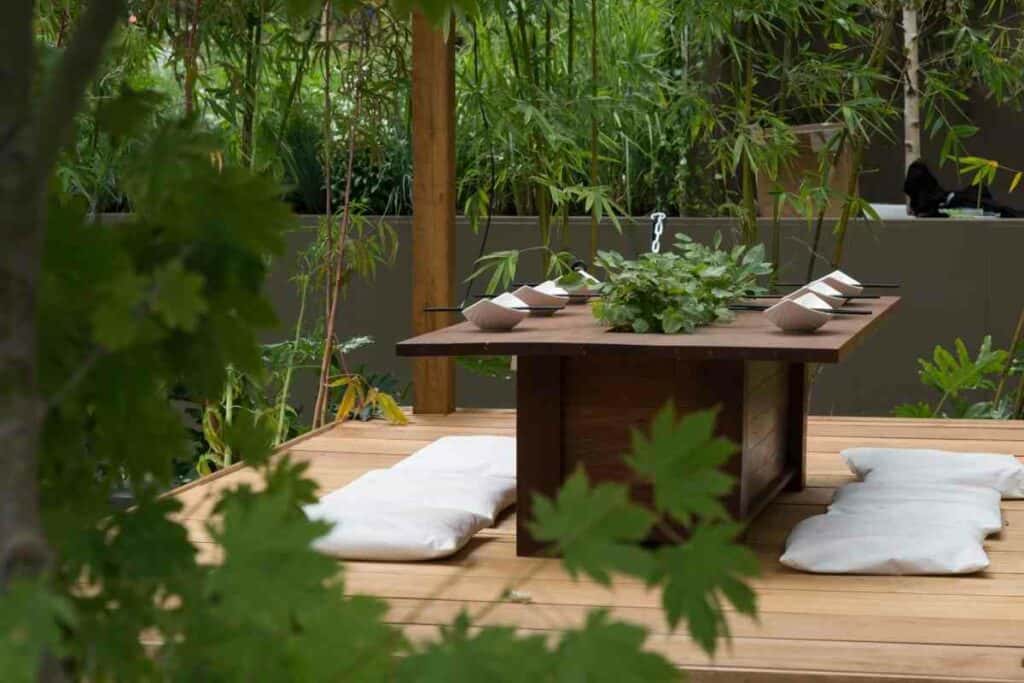
When you don’t have chairs, you need to sit on the floor to eat. This has meant that Japanese dining tables are low down so that you can kneel whilst eating.
Many people use comfortable cushions to kneel or sit on.
These days, lots of Japanese homes have adopted a more Western style of dining table and chairs.
It’s also thought that sitting on the floor means you create a physical connection and stillness with the earth.
Formal meals
As mentioned, in a formal meal Japanese people will kneel whilst eating.
However, once the dinner has begun and there has been a kanpai (an opening toast), people will usually relax their seating style.
The host might even tell you to relax your legs.
When a meal is ending, many people switch back to a more formal position. This denotes that they are ready to leave in a polite way.
For Hosts: It’s also easier to kneel whilst eating because it’s much easier to get up and down from this positing when hosting.
4 Types of Japanese tables
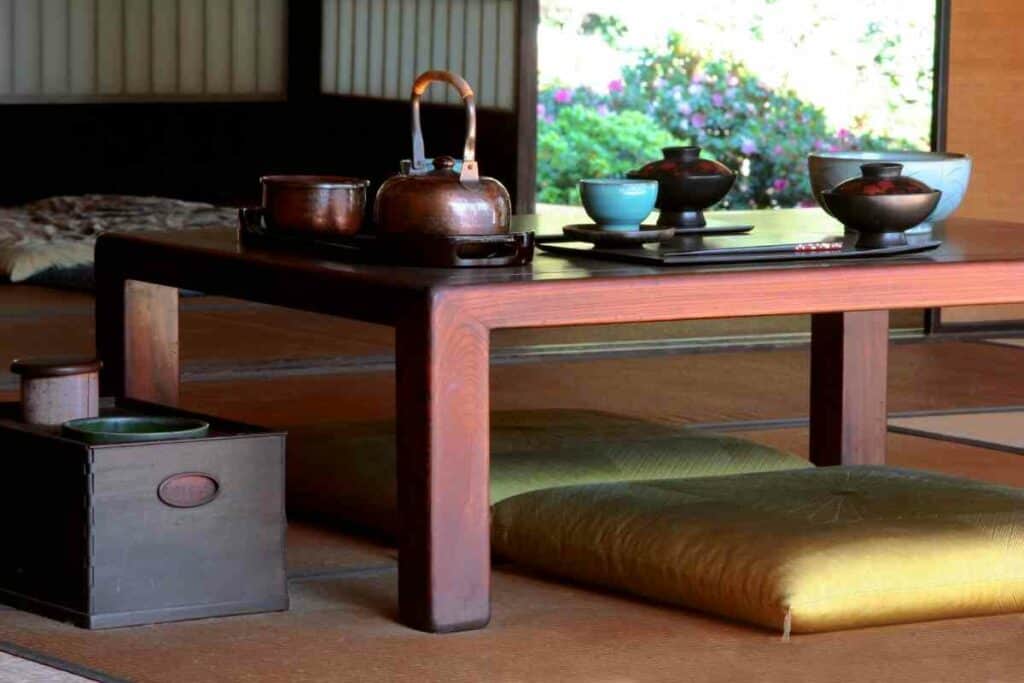
There are lots of styles of tables in Japan.
These include:
- chabudai
- hazoken
- horigotatsu
- kotatsus
1 – Chabudai
A chabudai is a large, low-profile table that can seat lots of different people at once.
This type of table has four legs that are usually collapsible for easy storage.
When using a chabudai, people may sit on tatami or zabuton or may kneel whilst eating.
2 – Hazoken
A hazoken is a small table that was used in early Japan. It was small and box-shaped.
Booking.com3 – Horigotatsu
This is a type of traditional table in Japan.
It has a recessed floor underneath, which allows people to stretch out their legs. With a horigotatsu, people can sit in a western-style whilst still sitting on the floor.
Anyone who wants to kneel whilst eating can still do so.
4 – Kotatsus
A kotatsus table is a heated table.
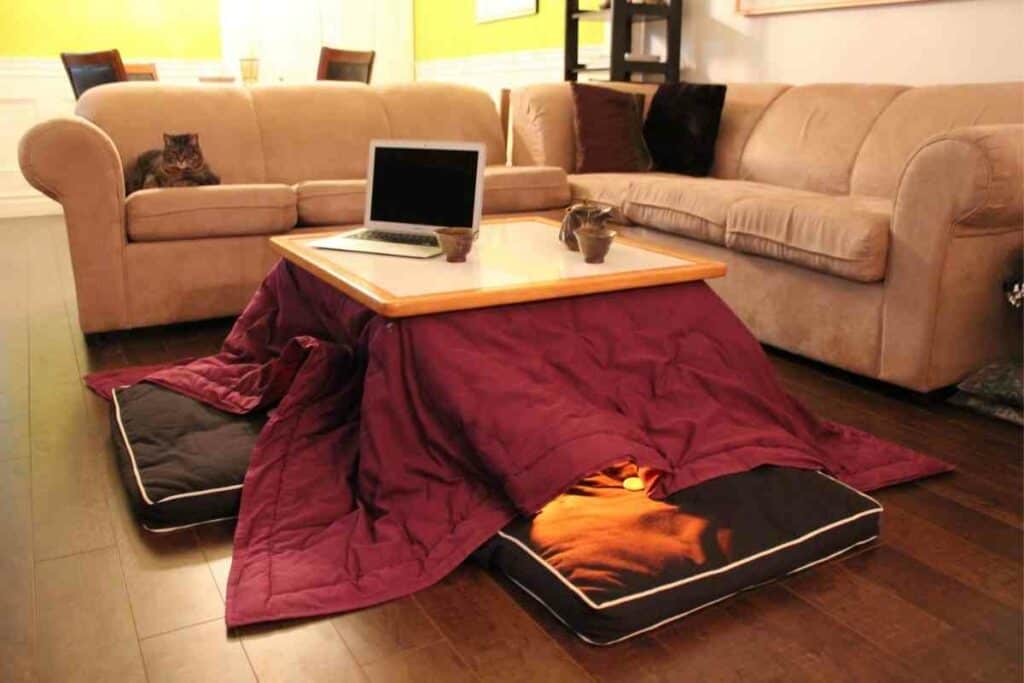
It will keep your lower body warm whilst you’re eating. Usually, there is an electric heater under the table in the center, meaning your legs are close to the heat.
Then, you’ll find the table covered with a floor-length blanket that hangs down and traps the heat.
A kotatsus table is traditionally about 16 inches high (40 centimeters).
What is tatami dining?
When you go to a Japanese restaurant you might experience tatami dining.
Tatami is a type of flooring material. Essentially, it’s a soft straw mat. They were once considered to be a luxury item that only the nobility would have for seating.
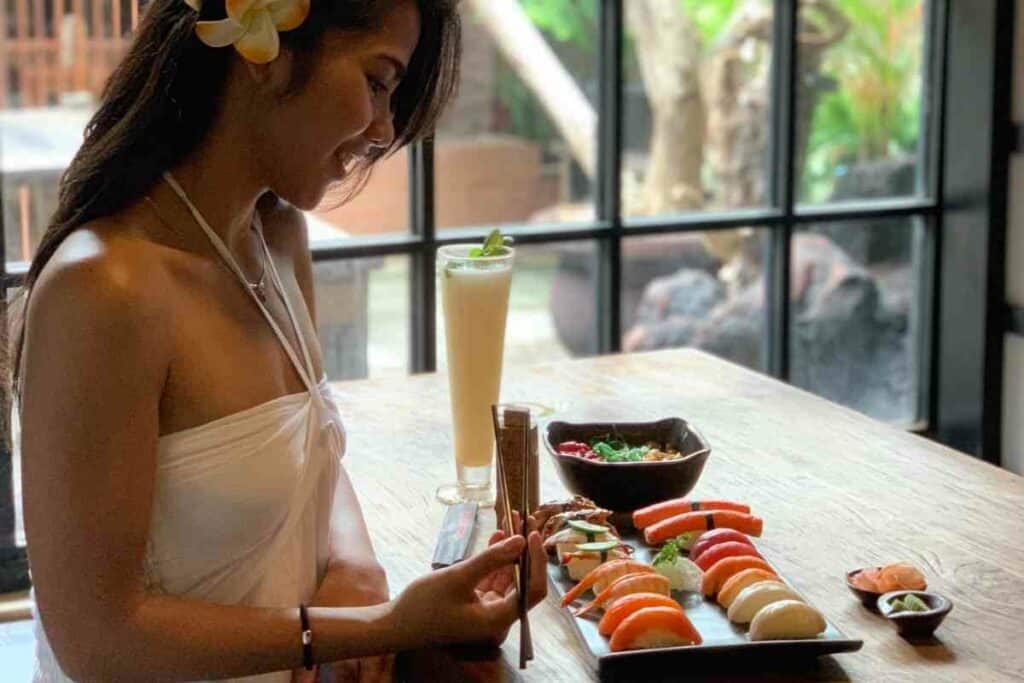
There are many Japanese restaurants that offer this experience both in Japan and elsewhere in the world.
It’s not unusual to see the tatami room decorated with:
- arranged flowers
- bonsai trees
- carved pillars
- and decorated scrolls
Some restaurants will also use shoji screens for guests to have privacy whilst dining.
Is it rude to sit with your legs crossed?
If you are at a formal dinner like a business dinner, you would be expected to kneel whilst eating.
In informal situations, like family meals, you will sit on the floor. It’s rare to see women sitting with their legs crossed though.
Keep In Mind: If you’re sitting on a chair, it’s also considered rude to cross your legs if you’re in a formal situation like a business meeting so be careful!
Japanese seating order
In a formal meal, there will be a seating order.
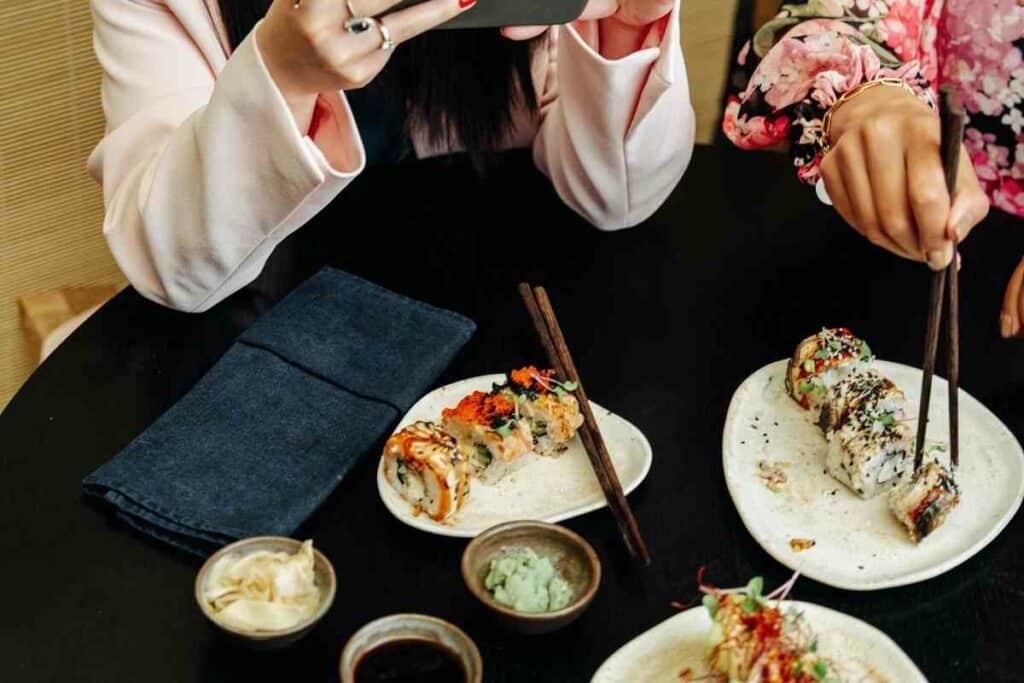
If the room is a traditional, Japanese-style room that has a tokonoma (an alcove), the most important guest would be seated in front of this with their back to the alcove.
This kamiza (honored seat) is also farthest from the door or entrance to the room.
The least important person or the host will sit in the shimoza, which is the seat closest to the entrance.
Final Thoughts
Though kneeling whilst eating is a long tradition that has existed for centuries, more and more people in Japan are favoring the Western way of dining nowadays.
It’s much more common to see Western-style dining tables and chairs in Japanese homes. That said, you’ll still find traditionalists and restaurants that offer this experience.
What’s more, many formal meals and business meetings will be organized in this way so it’s good to get used to the etiquette so you know the appropriate way to kneel whilst eating.
Good to Know
- 12 Things Tourists Should NEVER Say in Japan
- Kissing Robot: Exploring the Popularity of the Chinese Kissing App
- Unlocking the Secret Dating Rituals Only Locals Know in Japan
- Samurai Armor: Ancient Protection for Japan’s Elite Warriors
- 10 Amazing Facts About Schools in Japan: Unique Traditions and Educational Practices
- Where can you see snow monkeys in Japan: Best locations and viewing tips









